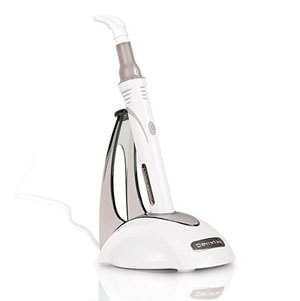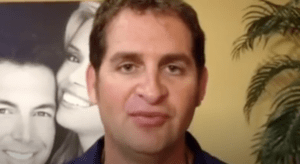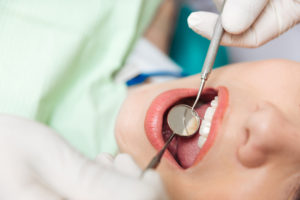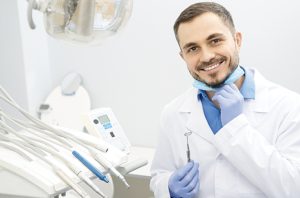Has your dentist told you that you need to have a tooth extracted? Although the thought of having a tooth pulled may seem scary, tooth extraction is a very common procedure that can often be performed without any complications.
Before you undergo your tooth extraction, it’s best to familiarize yourself with the process so you’ll know what to expect. Let’s look at some of the most frequently asked questions about tooth extraction.
Is tooth extraction painful?
As with any medical procedure, there is a chance that you’ll experience some pain or discomfort with a tooth extraction. However, the pain likely won’t be as severe as you think. Your dentist will take steps to minimize discomfort and make you as comfortable as possible. In fact, many dentists are skilled in using new technology that helps make dental procedures as pain-free as possible. With modern dentistry practices, having a tooth extracted is a fairly simple procedure for most people.
Depending on your individual circumstances, your dentist may recommend that you be sedated for the procedure, or you may simply be given a local anesthetic. You may feel some pressure or a pinching sensation while your dentist performs that injection. If you are nervous about dental injections, ask your dentist about DentalVibe — a device that uses a gentle vibration sensation to block pain signals from the brain.
During the actual procedure, you should not feel any pain. Following the extraction, you may experience some gums, tenderness, or bleeding. Your dentist will prescribe pain medication for these symptoms, or instruct you to take over-the-counter pain relievers.
How long does it take to recover from a tooth extraction?
Recovery from a tooth extraction is reasonably fast. Many patients experience mild pain for three to seven days after the extraction. In most cases, your extraction site will be completely healed within two weeks, although this depends somewhat on your individual circumstances. Some people may feel some soreness for a few weeks, but this is more likely when there have been complications associated with the procedure.
How long after tooth extraction can I eat?
For most tooth extractions, you’ll be able to eat soft foods after a few hours. You may need to wait at least twenty-four hours after having a tooth extracted before eating solid foods. If you’ve had your wisdom teeth removed, you may have to continue eating soft foods for several days. Avoid foods that are sticky, crunchy, or hard to chew until your extraction site has completely healed. Your dentist will give you aftercare advice about how soon you can eat and which foods are best to avoid.
Things to eat after tooth extraction
After having a tooth extracted, it’s best to completely avoid eating and drinking for at least three hours. You can then eat soft foods and liquids such as soup. It’s best to start with blended soups that don’t contain bits, such as tomato or pumpkin soup. Allow your soup to cool somewhat, as hot foods and beverages can interfere with the blood clot that forms in the socket, which is necessary for healing.
Other foods that are good to eat after dental surgery include mashed potatoes, broth, Greek yogurt, and applesauce. Scrambled egg makes an excellent meal for the evening that you’ve had your tooth extracted. You can also try mashed banana or avocado, ice cream, and instant oatmeal.
When can I brush my teeth with toothpaste after an extraction?
It’s recommended that you wait at least twelve hours after having a tooth extracted before brushing your teeth. Brushing your teeth too early could dislodge the blood clot that forms in the socket left by the extraction. Disrupting the blood clot could result in a condition called dry socket, which can be very painful and can affect the bone and nerve endings.
You can try rinsing out your mouth with salt water after brushing your teeth. It’s best to avoid the affected area when brushing your teeth; gargling with salt water will help to keep the incision clean.
What should I avoid after tooth extraction?
Avoid eating hard foods that require chewing after having a tooth extraction. Stick to soft foods for at least twenty-four hours. It’s also best to avoid hot foods or food that contains spice, especially chili.
Avoid anything that may irritate the affected area, including vigorous brushing. Don’t brush the gums.
Do not smoke or use any tobacco products for at least three days following a tooth extraction.
Pressure could result in disruption of the blood clot, so avoid sucking on candies or drinking from straws.
When eating, it’s best to avoid chewing on the affected side of your mouth. Avoid prodding the extraction site. Keep your fingers and tongue away from the extraction site so as not to cause irritation.
When can I drink alcohol after tooth extraction?
Following a tooth extraction, it’s best to wait at least 72 hours before drinking alcohol. Alcohol thins the blood, which can prevent blood clots. If your blood isn’t able to clot, it will slow down your recovery.
If you are taking pain medications, it’s also best to avoid mixing them with alcohol. To be safe, avoid drinking alcohol until you have finished taking your pain medication.
Can I have coffee after tooth extraction?
Most dentists will recommend that you avoid coffee and other hot drinks for two to three days following a tooth extraction. Hot foods and drinks may interfere with blood clotting. This includes coffee, tea, and herbal teas. It’s best to take small sips of room-temperature water to stay hydrated and quench your thirst.
Can you use mouthwash after tooth extraction?
It’s best to avoid using mouthwash for at least 24 hours following a tooth extraction. After this period, you can use mouthwash or make your own solution with salt and warm water. If you gargle with mouthwash too soon after having a tooth extracted, you’ll risk dislodging the blood clot.
What should a tooth extraction look like when healing?
Many patients experience some pain and swelling of the gums following an extraction. Mouths and gums generally heal quickly, although the affected area may look red and sore for a few days.
In rare cases, an infection can occur at the sight of the extraction. An infected gum will look very red and swollen, and you may also see pus. If you’ve had a tooth extraction and are worried it’s not healing quickly enough, or you think it may be infected, contact your dentist.
Find a DentalVibe dentist
Looking for a dentist who offers pain-free dentistry? Our directory of certified pain-free dentists is filled with providers who are committed to providing as close to pain-free dentistry as possible! Find a DentalVibe dentist and make dental anxiety a thing of the past!
















